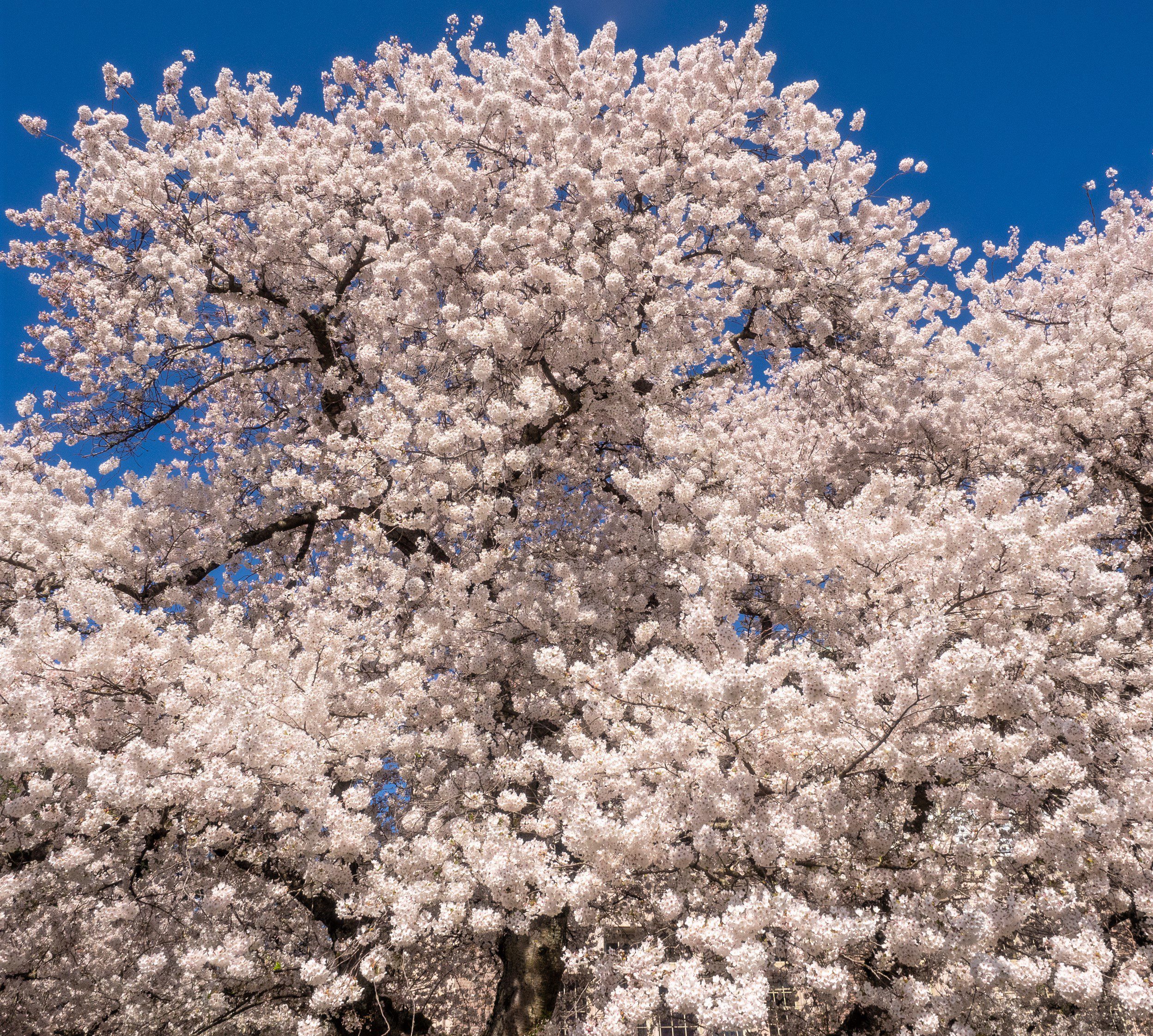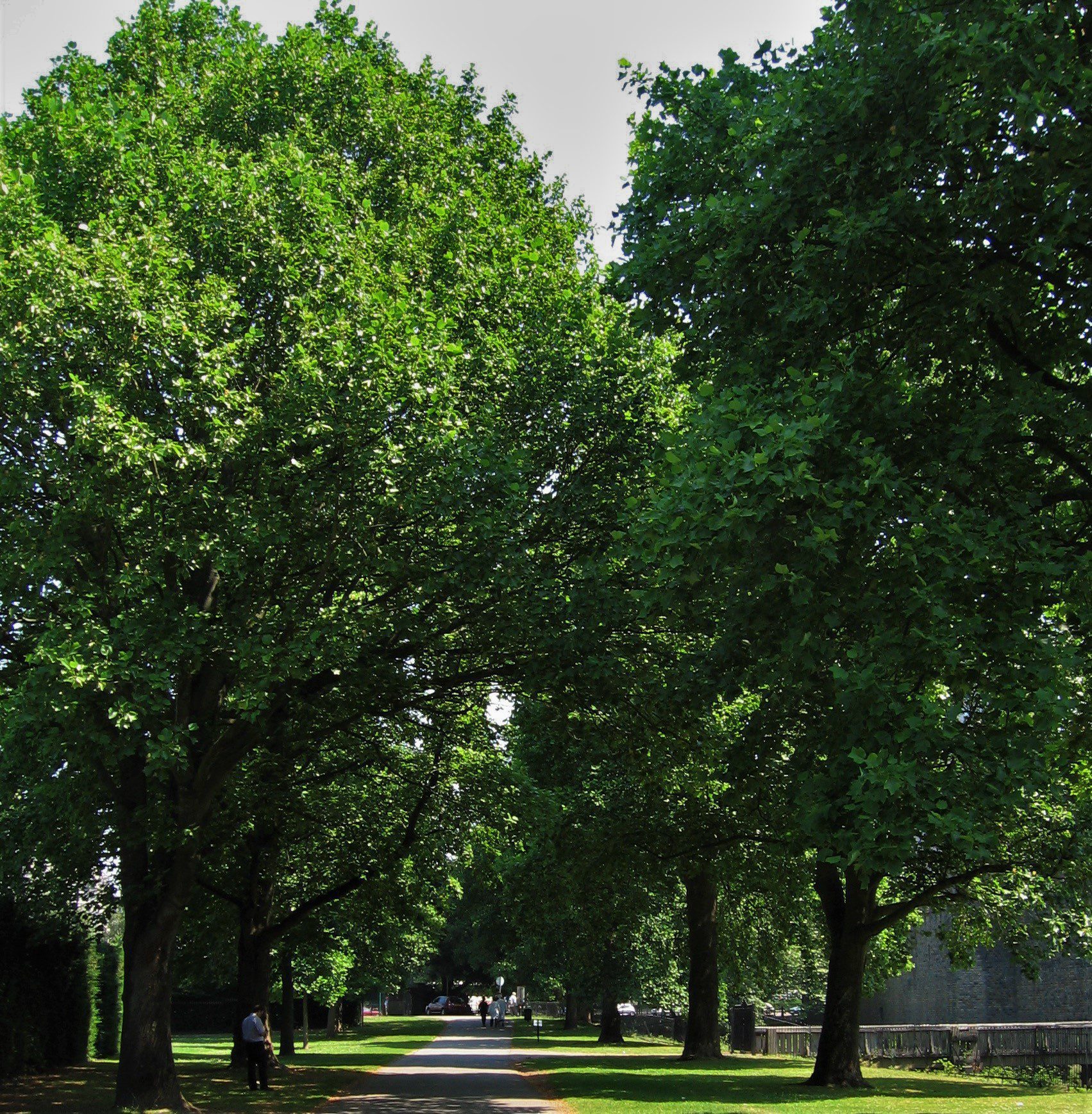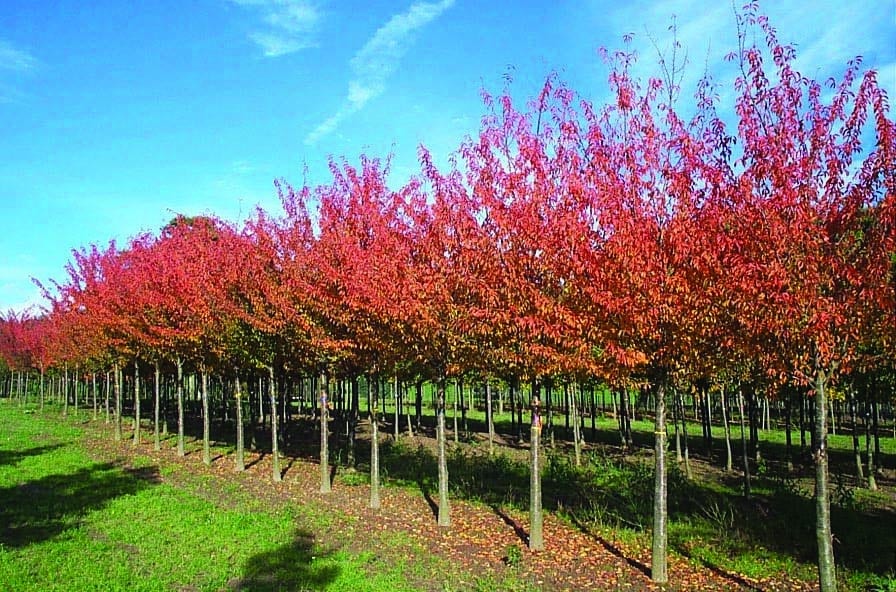It seems trees are, at last, getting the recognition they so deserve, with tree planting commitments high on the political agenda.
There is no doubt that trees bring swathes of benefits. But, for many who are trying to plant trees where space is already at a premium – whether that is in narrow city streets, in the centre of mini-roundabouts or in smaller gardens – the challenge is ensuring the glorious tree will not ultimately outgrow its destination.
At Hillier Trees, we have a large selection of trees that are ideal for narrow spaces, thanks to their specific forms. These are some of my favourites, all British grown on our field and container tree nurseries in Hampshire.
Betula pendula fastigiata ‘Obelisk’
This shy silver birch keeps quietly to itself with little fuss. It is similar to the standard native silver birch in that its leaves are heart-shaped and hang delicately, but its canopy is only half open, with its upright branches kept close to its body. The width of the tree will only ever reach 2-2.5m wide.
This tree is an ideal choice for tighter locations and can be used strategically in High Street locations where numerous other factors, such as utilities and shop entrances, are also a consideration.
Factfile
Common Name: Silver obelisk birch
Environment: Grows in the majority of well-drained soils with full or partial sun
Size: 10m high x 2m wide after 25 years
Fagus sylvatica ‘Dawyck’
F. ‘Dawyck’ is a stunning cultivar of our native beech tree with a tight, narrow form. Originally discovered in the woods within the Dawyck estate in Peeblesshire, Scotland, the owners liked this unique tree so much that it was transplanted into the Dawyck gardens closer to the house for them to enjoy.
This tree has a tight pyramidal canopy and is stunningly tall, reaching 20 plus meters. It retains its width, though, never developing more than 3 metres wide. This opens up numerous possibilities for its use, including tight central reservations that require shade and intriguing landscape designs.
Factfile
Common Name: Dawyck beech
Environment: Requires free-draining soil that does not water-log. Its shallow roots are not suitable for overly exposed locations.
Size: 10m high x 3m wide after 25 years
Prunus litigiosa
This rare tree was brought to the UK by the famous plant explorer Ernest Henry Wilson in the early 1900s, first introduced as Prunus pilsiuscula media.
Its slender columnar form grows with a half open canopy that remains narrow into maturity. Delicate buds unfold with elegant flowers that hang gracefully in clusters with the opening foliage. The foliage is a pleasant light green, which develops mellow golden tones for the autumn. This is an ideal tree for smaller areas within urban locations.
Factfile
Common Name: Tassel cherry
Environment: Suitable for most soil types, including chalk and clay. Requires free-draining soil as it does not tolerate water logging.
Size: 8m high x 3m wide after 25 years
Prunus sargentii ‘Rancho’
This American cultivar was cloned during the 1950s specifically for its narrow columnar habit. This broadens only slightly as it matures, into a 3-metre-wide narrow vase. In March, the single flowers open, clustered in pairs and in fours. Their large petals display wonderful shades of creamy pinks that remain for more than 3 weeks. In early autumn, the leaves offer stunning fiery shades of orange.
The form of P. ‘Rancho’ has ensured its use within urban locations all over the world. It is particularly suited for central reservations and avenue planting, along with residential areas to create seasonal beauty on green verges with housing estates.
Factfile
Common Name: Sargent’s cherry
Environment: A tough tree that suits most soil types, as long as they are free-draining.
Size: 7m high x 3m wide after 25 years
Prunus ‘Spire’
Also known as Prunus ‘Hillieri Spire’, this is a Hillier tree, created and raised at our own Hillier Nurseries in the early 1920’s. The original tree is still growing on our nurseries and has become 10m high with a broad crown. This is, in my view, one of the very best small street trees for tight urban locations and is ideal for narrow residential streets where the doorstep is on the pavement.
The canopy is a narrow pillar shape with ascending branches. These arch at the tips as the tree matures, creating a wonderful vase shape. During spring, the tree appears light and airy with a soft pink cloud covering its canopy. Come autumn, the leaves develop into a wonderful autumn display of vibrant purples and reds.
Factfile
Common Name: Cherry ‘Spire’
Environment: A tough tree that suits most soil types, as long as they are free-draining. It is also tolerant of urban pollutants, making it ideal for urban street applications.
Size: 6m high x 3m wide after 25 years



